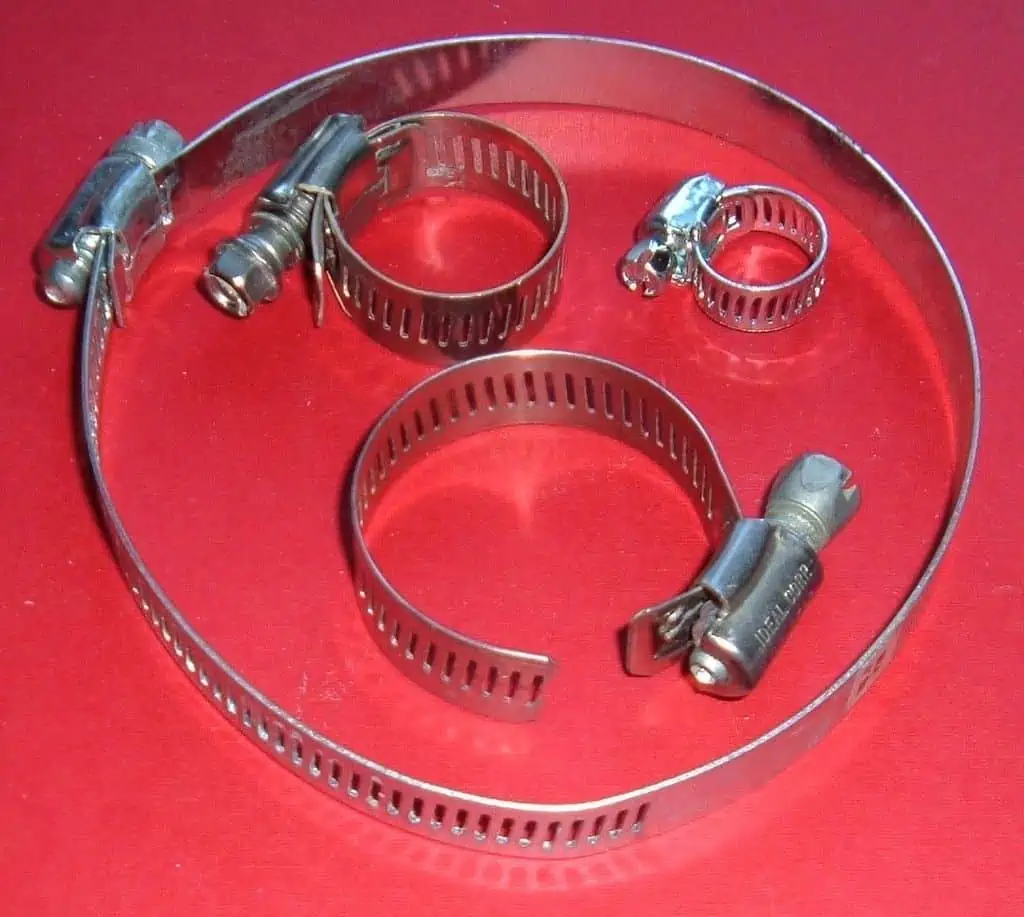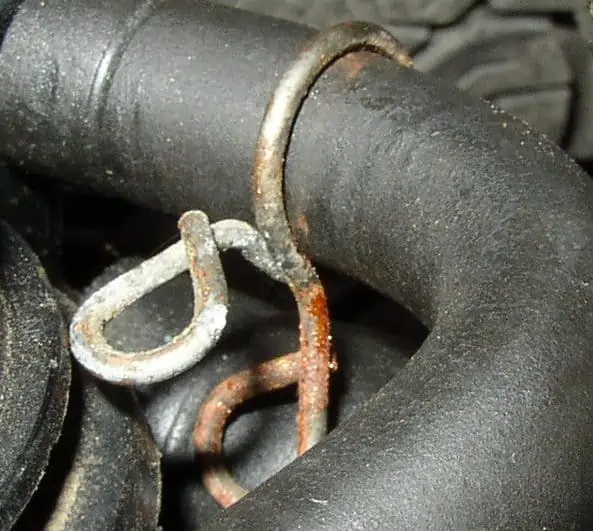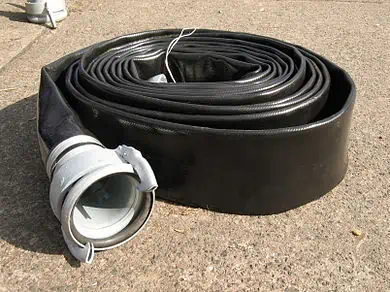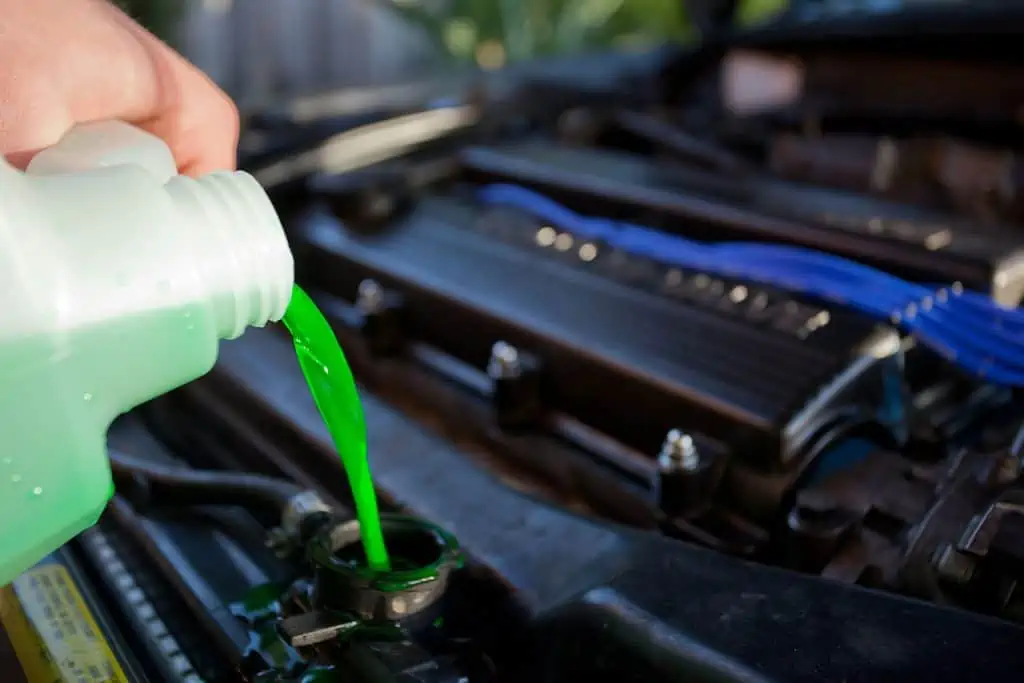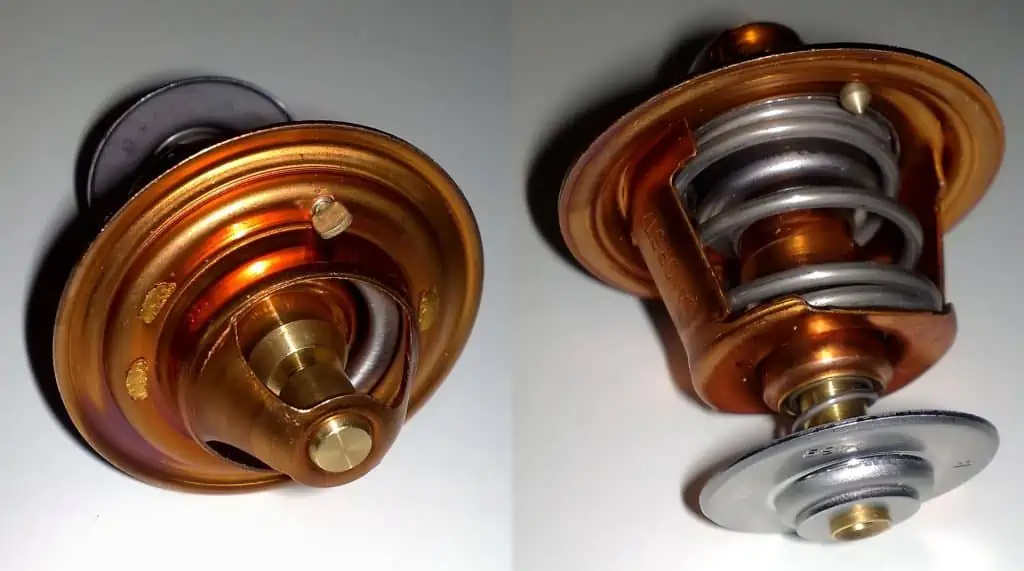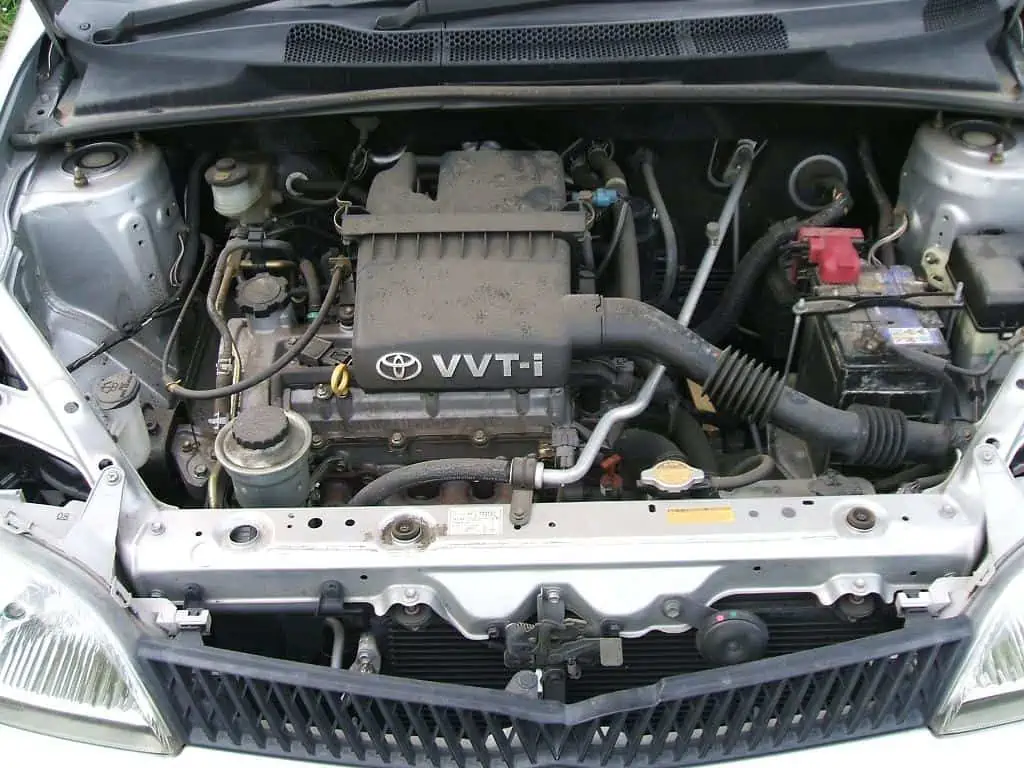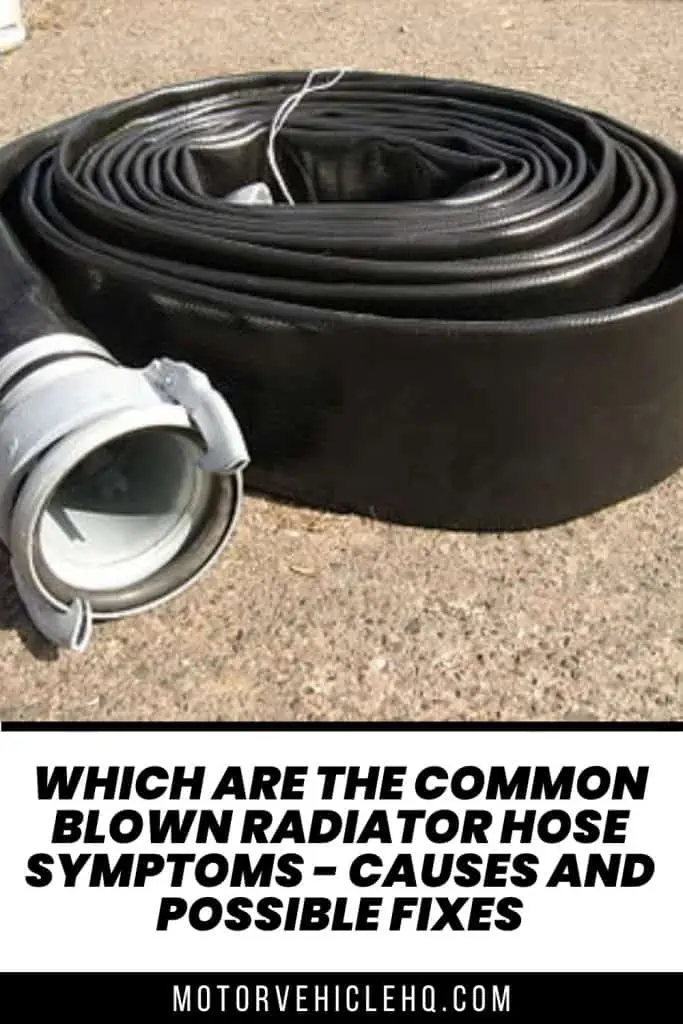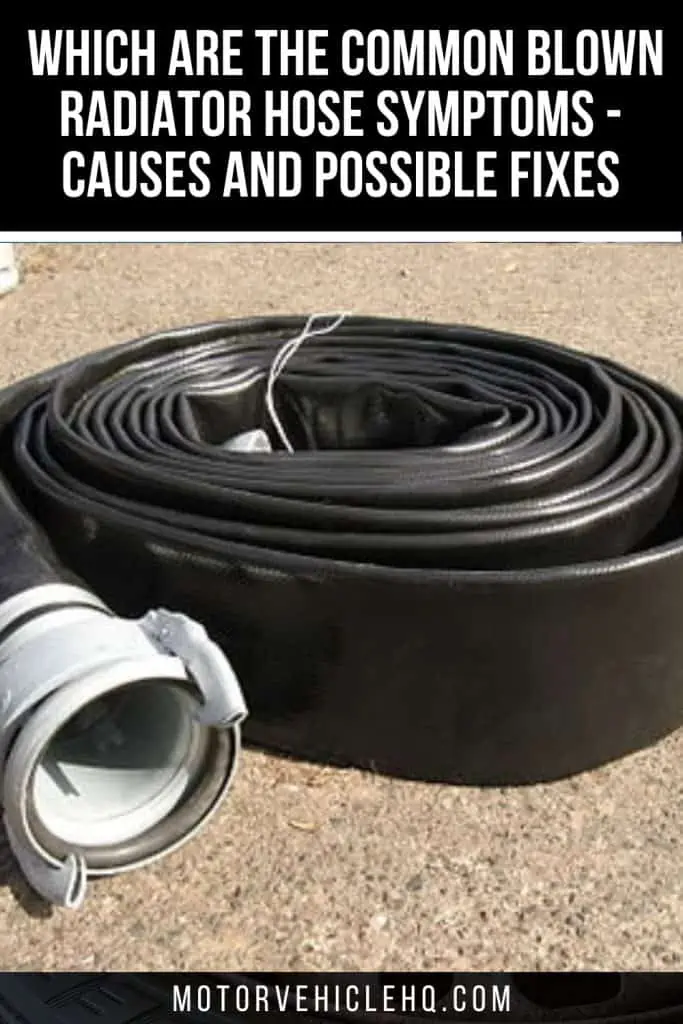As you can undoubtedly understand, when your vehicle is operating, the area behind the hood can become extremely warm. Your car’s engine can generate a significant amount of heat, which is why it’s crucial that your vehicle also has a fully functional radiator.
It’s also the reason why it’s critical that the radiator hoses that are connected to your radiator perform as intended.
The management of coolant fluid flow in your car’s cooling system depends heavily on the radiator hoses. An upper and a lower radiator hose are normally found on every car.
Typically, the lower radiator line is connected to the engine’s water pump, which suctions fluid, while the upper radiator hose is connected to the engine’s thermostat housing. On the opposite end of each hose is a connection to the radiator.
A molded “T” connection with hoses leading to other connections may be present on some radiator hoses. Additionally, there are “modular” radiators and coolant hoses.
For the cooling system to function effectively, all of the coolant hoses must be in good condition. They are constantly exposed to extremes of heat and cold, which is unfortunate because they are prone to wear.
The radiator hoses will break when they are too old or brittle and need to be replaced. To better prepare for repairs, you can use the information in this article to determine how much a radiator hose replacement costs.
Whether or not other maintenance on the car must be done in addition to replacing the hose affects how much it costs to do so. If they are simply cracked or damaged, they are often affordable to replace.
The majority of the time, individuals who want to address overheating issues will take their vehicles to a mechanic for a checkup, which frequently includes examining the hoses.
Radiator hose clamps by ArnoldReinhold / CC BY-SA 3.0. With the aid of a screwdriver, radiator hose clamps can be loosened to allow removal. If the old hose is firmly attached, you might need to cut it entirely off with a tool knife.
Radiator Hose: What Is It?
We’ll go into great detail regarding changing radiator hoses and briefly discuss how much it costs to do so in a moment. However, before we go, you should be aware of what radiator hoses are and how they prevent your vehicle from overheating.
Your car has a radiator inside of it that is designed to cool it off once the engine starts running, as we briefly discussed a moment ago. The radiator has a thermostat, which closely monitors how hot it becomes underneath your hood.
If the temperature rises too much, your radiator will activate and release engine coolant, also known as antifreeze, which will go in the direction of your engine and run through it to cool it down. The recirculation of coolant between your radiator and engine is carried out by your radiator hoses.
Your vehicle has two primary radiator tubes. There is a hose known as an outlet hose that transports cool engine coolant from your radiator to your engine and a hose known as an inlet hose that transports hot engine coolant from your engine to your radiator.
Both of these radiator hoses are made of a unique kind of rubber that is resilient enough to withstand the extremely hot engine coolant passing through them.
Radiator Hoses: How Long Do They Last?
It’s time to speak a little bit about how long your radiator hoses will last you now that you understand what they are and how they function in the context of your car. Your radiator hoses won’t last forever, just like the majority of the other components in your vehicle, so you should find out how many of them need to be replaced in advance.
Regarding how long radiator hoses will last, there is no set guideline. However, on average, you may anticipate using one for around five years, or roughly 60,000 miles, before it starts to malfunction.
By taking proper care of your vehicle and changing your engine coolant regularly, you might be able to extend the lifespan of your radiator hoses. Even so, you might only get a few years out of them before you need to ask a repair how much it will cost to replace your radiator hoses.
How Can You Detect a Blown Radiator Hose?
During a routine check, a blown radiator hose may be simple to identify since it appears brittle and worn. However, since the hose is concealed beneath your hood, you might not realize that it has already sustained damage. The following are warning indicators of a blown radiator hose that you need to be aware of
1. Leaks In Coolant Fluid
A blown radiator hose in your car increases the likelihood that coolant leaks will occur. You might quickly detect a sweet-smelling fluid leaking from underneath your vehicle if a leak starts to form.
Depending on the car, it could appear green, yellow, purple, or blue. However, keep in mind that coolant can leak from a variety of locations; the radiator pipe is not usually the source.
Coolant leaks can also be brought on by other issues with the cooling system, such as a broken radiator, a bad water pump, or a damaged plastic manifold, hose fitting, or thermostat housing.
A spring clamp on an automotive radiator hose by Bushytails / CC BY-SA 3.0. A blown radiator hose may be easy to spot during a normal inspection since it appears brittle and damaged. The hose is hidden beneath your hood, so you could not see that it has already been harmed.
To find out what is causing the leak and where it is coming from, speak with a mechanic. You’ll need a replacement radiator hose if the cause is a blown radiator hose.
2. A Low Level of Coolant
Vehicle fluids should be checked frequently by car owners. A damaged radiator line in your car can be the cause of your car’s low coolant level.
One of the most prominent symptoms of a blown radiator hose is low coolant levels, which often cause your low coolant light to come on. Keep an eye on the reservoir’s coolant level. Don’t ignore this since some coolant will be lost if you do.
If it consistently has to be filled off with a 50/50 mixture of distilled water and the right coolant, it may indicate that your car is losing coolant fluid, possibly at the radiator pipe. However, a radiator hose leak will typically be simple to identify.
Rubber hoses, however, enable prolonged molecular coolant transport. Silicone hose is a worse material than regular rubber.
It is advised to stop over and check your car before continuing to your destination if you see a low coolant indicator.
NOTE: To prevent serious harm, never open the fill cap on a hot cooling system.
Additionally, using your car with low to empty coolant fluid might cause overheating, which can cost your engine money.
3. Formation of a Coolant Crust Near a Radiator Hose
A coolant crust formation at the point where the radiator hose connects to the engine or radiator can result from a leaky radiator hose.
4. Defective Radiator Hose Clamps
At radiator hose couplings, worm-type clamps, and spring-type clamps both have a chance of failing and breaking, respectively.
5. Radiator Hose That Is Collapsed
What is a collapsed radiator hose, you might wonder? A collapsed hose has shrunk or fallen. If you find that your radiator hose has suddenly shrunk, the cooling system is malfunctioning.
One typical sign of a faulty radiator cap that you should be on the lookout for is a collapsed hose. The hose may burst due to a weak or soft hose, a radiator cap that is releasing pressure from the system, or both.
If you discover a collapsed hose, you should check it out and mend it because a collapsed hose prevents enough antifreeze from passing through, which causes engine overheating.
6. Radiator Hose That Looks Swollen or Spongy
Owners of vehicles should frequently check the interior and check for damaged components. Your radiator hose might need to be replaced if you notice that it is bloated or spongy. It’s recommended to inspect the radiator hoses regularly to prevent accidents because a bulging or spongy radiator hose could rupture while you’re driving.
The rubber will start to deteriorate to the point that it starts to swell if there is even a small engine or transmission oil leak close enough to soak the hose with oil. The same is valid for heating hoses.
A sample radiator hose by Thiemo Schuff / CC BY-SA 3.0. The fact that replacing a radiator hose doesn’t take very long contributes to its low cost. The radiator hoses can normally be replaced in only 15 minutes if you bring your car to a reputable repair.
7. Radiator Hose That Is Broken or Worn
The coolant fluid and heat are constantly in contact with your radiator hose. Your radiator hose could deteriorate and crack as a result of fluctuating temperatures. It might become porous, cracked, or even brittle.
Your engine won’t function well if it’s in poor condition. Make an appointment for a radiator hose replacement right away if you check under your hood and discover that your radiator hose is too damaged or worn to work.
8. Overheating Engine
When you observe the engine overheating, it means there is a problem with the engine cooling system because the vehicle’s engine should run at an average operating temperature. The radiator hose may be to blame because of how frequently they are subjected to high pressure, which causes them to crack and leak with time.
Can an “exploded radiator hose” lead to overheating? Yes, one of the typical causes of engine overheating is a bad radiator pipe, and you shouldn’t ignore it. The engine could break down if the overheating is ignored or not fixed.
Your engine could overheat if your cooling system isn’t effectively removing heat. Overheating and coolant leakage can be caused by defective cooling system components, such as a blown radiator hose.
You may determine whether you require a new radiator hose by having a quick conversation with your mechanic to determine whether a leaky radiator hose is to blame for your engine overheating.
What are the Common Reasons for a Blown Radiator Hose?
The radiator hose won’t endure indefinitely. They are particularly prone to heat damage when constructed of rubber.
The hose will eventually break or detach where it is attached to another component of the cooling system after becoming brittle and thin over time. The following are the most typical reasons for radiator hose failure:
1. Overheating That Results In the Hoses Cracking and Drying Out
Overheating is the primary and most frequent cause of a blown radiator hose. This is especially true if the car hasn’t spent a lot of time in really hot temperatures. This kind of damage can be brought on by even routine driving on hot days, which makes your vehicle overheat more frequently and quickly.
2. Hoses Become Brittle Under High Temperatures
High temperatures are the second factor contributing to a blown radiator hose. Rubber hoses are particularly vulnerable to the heat produced by the engine of your car since rubber has a lower melting point than metal.
A hose begins to shrink and become hard after just a few seconds in an extremely hot environment, which causes cracking and other damage.
3. Old Age Makes Hoses Brittle and Crackly
Old age is the third factor for a blown radiator hose. Even the greatest materials, such as rubber hoses composed of organic or natural components, eventually begin to degrade.
A typical engine coolant radiator by MGTom. When the temperature becomes too high in the engine, your radiator will open up and discharge antifreeze, also known as engine coolant, which will flow into your engine to cool it down. Your radiator hoses are responsible for recirculating coolant between your radiator and engine.
The high temperatures of rubber hoses must withstand speed up this process, which can take decades to complete in other auto parts. This may result in cracking that renders them ineffective over time, necessitating replacement.
4. Hoses Can Disconnect or Fall Off In Case of Car Accidents
In some circumstances, a car accident is the fourth reason for a blown radiator hose. Your radiator hose was probably damaged when the component was knocked free if the mechanic examines your vehicle after an accident and discovers damage to the hose.
This happens primarily as a result of how exposed it is, making it susceptible to flying objects or anything else that might run into it hard enough to create a problem.
5. Hoses Not Sufficiently Secured to the Radiator
Loose hoses are the fifth reason for a blown radiator hose. If you’ve ever had a hose come loose from its fitting, you know how annoying it can be given all the issues that might arise as a result.
You have to deal with additional charges due to the harm that is typically done to other parts when hoses come loose in addition to the inconvenience and missed time.
6. Hoses Dry Out As a Result of a Bad Water Pump
A malfunctioning water pump is the sixth reason for a blown radiator hose. This problem is more frequent than you may imagine, making it frequently the underlying cause of many radiator hose issues.
It occurs when the pump is unable to flow enough water through the system, which prevents your vehicle from being properly cooled while it is operating. When that happens, hoses often dry up over time, grow brittle, and eventually disintegrate.
7. Hoses Dry Out As a Result of a Defective Radiator
A malfunctioning radiator is the seventh reason for a blown radiator hose. Because it cannot easily keep up with cooling your vehicle without any complications at all, a malfunctioning radiator has the same effect as a water pump with problems.
You should expect anything from decreased performance to more significant engine damage when either of these components develops a problem because both are necessary to prevent your engine from overheating.
8. Hoses Get Dry and Crack If They Leak
Leaking hoses are the eighth reason for a blown radiator hose. Due to the absence of coolant being forced through a leaking hose frequently enough to keep everything moist, it will most likely dry out quickly if it is kept under pressure.
This results in cracks where debris or anything else can enter much more easily and cause even more issues, such as making your car overheat more quickly.
9. Hoses Become Bristle When Rusted Through
Rusted-through hoses as a result of engine corrosion problems are the ninth reason for a blown radiator hose. Rust is a significant issue for most cars, as you can see if you’ve ever looked closely at the cooling system of your car.
Due to the materials being used and the system’s proximity to moving water whenever it is in use, it happens swiftly.
Replenishing coolant into the radiator by fir0002. You might be able to increase the lifespan of your radiator hoses by maintaining your vehicle properly and changing your engine coolant regularly. Even so, You may not get more than a few years out of them before you need to find out how much it will cost to replace your radiator hoses.
Imagine that some of your engine parts or hoses are rusted from being out in the elements. In that instance, they will deteriorate gradually until they become brittle and entirely fail during driving conditions with no warning at all.
10. Hoses Crack As a Result of Defective Timing Belts
Defective belts that aren’t kept up with are the tenth reason for a blown radiator hose. Today’s cars come with a wide variety of belts, but the ones near your engine are the ones you should pay particular attention to if you notice any radiator hose issues.
Because of how difficult they are to access, replacing them can be a hassle, but if you wait until the weather is better or your engine is cold, you will have to pay for more than simply repairs once this happens.
Is It Safe to Keep Driving with a Blown Radiator Hose on Your Car?
If your car is having any problems at all, you really shouldn’t be driving it around. But if you think your radiator hoses might be having issues, you should be extremely careful about not driving them.
Your car could sustain much more harm from you than it already has. Even worse, you can end up with a vehicle that needs to be completely dismantled.
You risk damaging your engine if you choose not to find out how much radiator hoses cost and replace them. In no time at all, your vehicle will overheat you, and when that happens, there is a good danger that a fire might start at any time.
Even if your car is quite fresh at that point, it will likely be useless. It’s for this reason that replacing radiator hoses when they’re damaged is so crucial.
What Actions Should I Take In the Event of a Blown Radiator Hose?
Problems with your radiator’s hoses may put you in a difficult predicament. If you notice any signs, you should take action right once to avoid dealing with radiator hose failure while driving.
Take your car to repair right away if you discover any coolant fluid leaks. Remember that other components could also contribute to cooling system issues, so don’t be afraid to contact your mechanic for a precise diagnosis.
It could be challenging if your radiator hose breaks while you’re driving. If it does, stop, switch off your engine, and have your vehicle towed to a secure area. To prevent burning yourself when checking under the hood, avoid opening your radiator cap. Once the engine has cooled, you can have your radiator hose changed.
You may easily take your vehicle to a mechanic for a radiator hose replacement if you discover that your radiator hose is damaged while it is parked. You might also attempt doing it yourself if you’re confident in your DIY abilities.
How Much Does It Cost to Replace a Blown Radiator Hose?
You might believe that replacing radiator hoses will be quite expensive because of their significance to the general health of your car.
However, nothing could be further from the truth than this! Radiator hoses are a necessary component of your car, but they will cost you much less than many other components that are located beneath your body.
A radiator temperature thermostat by Hoikka1 / CC BY-SA 3.0. The thermostat on the radiator keeps a close eye on how hot it gets under your hood. When the temperature becomes too high, your radiator will open up and discharge antifreeze, also known as engine coolant, which will flow into your engine to cool it down.
What are the radiator hose prices? Your choice of mechanic to replace your radiator hoses will depend on your car’s make, model, and location. However, the cost of radiator hoses is often between $150 and $175 for an individual.
Before everything is said and done, that includes labor costs of up to $100 and parts costing approximately $75.
We are aware that for some folks, $150 to $175 is a significant sum of money. However, compared to other auto maintenance tasks, changing radiator hoses is one of the more affordable ones. It certainly outweighs the alternatives, which may involve replacing an engine for roughly $5,000 or, worse, repairing a radiator for between $300 and $1,200.
How Long Does a Radiator Hose Replacement Take?
Radiator hose replacement is not particularly expensive in part because it doesn’t take very long to complete. As long as you take your car to a reliable mechanic, you can typically get the radiator hoses replaced in just 15 minutes. When your radiator hoses break, it only makes sense to get it done for this additional reason.
A mechanic will require new radiator hoses, fresh engine coolant, distilled water, a screwdriver, and a utility knife to change radiator hoses. To make room for your new radiator hoses, they will remove your old ones using the following procedure:
Step 1
Allow a vehicle to cool down completely so that nothing inside the engine bay is hot or even warm.
Step 2
Drain the engine coolant from a car’s radiator by placing a pan underneath the radiator.
Step 3
The clamps on radiator hoses can be loosened with a screwdriver so they can be removed. If the old hose is firmly attached, you may need to use a tool knife to completely remove it.
Step 4
Replace the old radiator hoses with the new ones and tighten the clamps.
Step 5
Refill your radiator with a concoction of distilled water and engine coolant.
Step 6
Start the car for a few minutes while leaving the radiator cover off. To push the engine coolant from the radiator to start working, rev the engine just enough to warm it up.
Step 7
Enjoy using the new radiator hoses as usual by replacing the radiator cap.
That is all there is to it. You can have new radiator hoses fitted in your vehicle in under 15 minutes, and you won’t need to worry about them again for another 60,000 miles.
Car engine showing the radiator by Carolla / CC BY-SA 3.0. If you decide not to research radiator hose prices and replace them, you run the danger of ruining your engine. Your car will quickly become overheated, and if that happens, there is a real possibility that a fire might break out at any moment.
Can I Fix a Blown Radiator Hose On My Own?
Some individuals believe that it could be a good idea for them to handle the job themselves because replacing radiator hoses appears to be so simple. You shouldn’t try to handle this auto repair yourself unless you have at least some experience working on cars.
The best engine coolant will be used in your vehicle, and a professional mechanic will choose the appropriate radiator hoses for it. They’ll keep the price of your radiator hoses low while doing all of this and guaranteeing that your new radiator hoses are fastened. It makes it well worth it to hire them.
If you choose to handle the job on your own, you run the risk of accidentally damaging your vehicle and eventually costing yourself a sizable sum of money.
What Happens If a Blown Radiator Hose Is Not Fixed Immediately?
This was briefly discussed earlier, but it bears repeating. Under no circumstances should you attempt to operate a vehicle with a blown radiator hose. If you do, your entire car is going to be in danger, and in extreme cases, you might even endanger your life and the lives of other people.
You don’t want to find yourself sitting by the side of the road watching your vehicle catch fire. But if you don’t pay the radiator hoses’ price and have your radiator hoses replaced, that’s exactly what may happen. If this ever happens, you’ll regret not spending the effort to get your blown radiator hose replaced.
A number of the symptoms of a blown radiator hose are also indicative of a failing radiator or even an engine. You’ll get into trouble down the road if you disregard those warning signs and assume they’ll go away on their own. It is far preferable to have a mechanic examine your vehicle to determine the source of the apparent issue.
The Conclusion
As soon as you experience any of the following blown radiator hose symptoms: engine overheating, low coolant, coolant leaks, or broken or collapsed radiator hoses. Examine the offending component or get in touch with a qualified mechanic to identify and/or repair the defective radiator hose.
A sample radiator hose by Thiemo Schuff / CC BY-SA 3.0

Jim Wicks is the founder of MotorVehicleHQ. With over two decades of experience in the automotive industry and a degree in Automotive Technology, Jim is a certified car expert who has worked in various roles ranging from a mechanic, car dealership manager, to a racing car driver. He has owned more than 20 cars over the past 15 years. Ask him about any vehicle you see on the road and he can tell you the make, model and year. He loves the aesthetics of all things cars, and keeps his vehicles in pristine condition.
In his free time, Jim enjoys getting his hands dirty under the hood of a classic car or taking long drives along the country roads. His favorite car? A 1967 Shelby GT500, a true classic that, according to Jim, “represents the pure essence of American muscle.”
